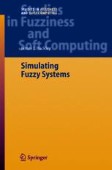Search
Search Results
-
What to Measure in Aneurysmal Subarachnoid Haemorrhage Research—An International Delphi Survey
Aneurysmal subarachnoid haemorrhage (aSAH) is a devastating condition with high mortality and morbidity. The outcome measures used in aSAH clinical...

-

-
DNA codes over \(GR(2^{3},d)[X]/\langle X^{2},2X \rangle\)
The main results of this paper are in two directions. First, the family of finite local rings of length 4 whose annihilator of their maximal ideals...

-
PET imaging of neuroinflammation: any credible alternatives to TSPO yet?
Over the last decades, the role of neuroinflammation in neuropsychiatric conditions has attracted an exponentially growing interest. A key driver for...

-
MDGCL: Graph Contrastive Learning Framework with Multiple Graph Diffusion Methods
In recent years, some classical graph contrastive learning(GCL) frameworks have been proposed to address the problem of sparse labeling of graph data...

-
Distributed neuro-fuzzy routing for energy-efficient IoT smart city applications in WSN
Wireless sensor networks (WSNs) enable seamless data gathering and communication, facilitating efficient and real-time decision-making in IoT...

-
A bipolar disorder-associated missense variant alters adenylyl cyclase 2 activity and promotes mania-like behavior
The single nucleotide polymorphism rs13166360, causing a substitution of valine (Val) 147 to leucine (Leu) in the adenylyl cyclase 2 (ADCY2), has...

-
Stability and Validity of Self-Reported Depression and Anxiety in Autistic Youth
The aim of this study was to assess test-retest reliability and diagnostic validity of self-report instruments of depression and anxiety in autistic...

-
Parameters optimization and precision enhancement of Takagi–Sugeno fuzzy neural network
Takagi–Sugeno fuzzy neural network (TSFNN) has been widely used in intelligent prediction. The prediction accuracy of TSFNN is impacted by its model...

-
Neuroprotective and vasoprotective effects of herb pair of Zhiqiao-Danggui in ischemic stroke uncovered by LC-MS/MS-based metabolomics approach
Ischemic stroke is the most important cause of disability and death worldwide, but current treatments remain limited. Traditional Chinese medicine...

-
Optimizing a Production Line
The simple production line considered in this chapter is shown in Fig. 20.1. This problem has been adapted from an example in [1]. This situation is...
-
Queuing I: One-Step Calculations
In this chapter we show situations where simulation can produce the same results as fuzzy calculations which employ the extension principle. We argue...
-
Simulation Programs
In this chapter we present some of the GPSS programs used in Chaps. 9–26. We had to omit many programs in order to keep this chapter. less that 20...
-
Summary and Conclusions
The first objective of this book is to explain how many systems naturally become fuzzy systems. The second objective is to show how regular (crisp)...
-
Dependability of Mobile Robots in Direct Interaction with Humans
Operating interactive mobile robots in unmodified natural environments such as in museums or at exposition areas impose requirements on the robots,...
-
Next Generation Teach Pendants for Industrial Robots
Teach pendants for industrial robots have sometimes been quite rudimentary in the past, and often enough users had to learn to cope with whatever is...
-
Adaptive and Distributed Coordination Algorithms for Mobile Sensing Networks
Consider n sites evolving within a convex polygon according to one of the following interaction laws: (i) each site moves away from the closest other...
-
4 Co-existence: Physical Interaction and Coordinated Motion
Co-existence an co-operation between a human and a machine which can move and act in an autonomous mode involves a form of interaction which goes...
-
The Robotic Bar – An Integrated Demonstration of a Robotic Assistant
Coming out of the labs, the first robots are currently appearing on the consumer market. Initially they target rather simple application scenarios...
-
Flocking in Teams of Nonholonomic Agents
The motion of a group of nonholonomic mobile agents is synchronized using local control laws. This synchronization strategy is inspired by the early...
